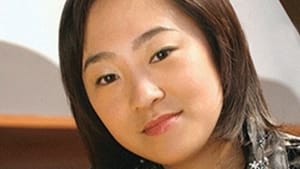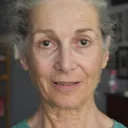Stay in the Loop
BSR publishes on a weekly schedule, with an email newsletter every Wednesday and Thursday morning. There’s no paywall, and subscribing is always free.
Haverford's not quite Philadelphia
Chamber Orchestra First Editions' 'Two Premieres and Early Mozart Magic'

James Freeman’s Chamber Orchestra First Editions (COFE) has lately presented new works in concert with early works by Wolfgang Amadeus Mozart. It’s a daring pairing that bridges the classical and the unconventional.
When associate conductor Heidi Jacob started the orchestral introduction of Mozart’s Rondo for Piano and Orchestra, K. 382 (1782), the staccato sounded heavy and bumpy. But the players settled in as Raim played her entrance on the piano.
The rapport between Jacob and Raim was evident and the two tried to pull and push the orchestra to a lighter, more fanciful rendition. Unfortunately, they did not succeed. Raim has both beautiful tone and excellent technique and knew the piece so well she was easily able to keep contact with maestro Jacob while creating some glorious moments in her solos.
The orchestra, made up of professionals and a few gifted students from Haverford College, was good. However, a Philadelphia audience, spoiled by the flawless playing they hear from the Philadelphia Orchestra's strings, has high expectations.
Nevertheless, Jacob and Raim managed to warm up the orchestra with this first Rondo. Thus, when James Freeman conducted the world premiere of Jan Krzywicki’s “Capriccio,” they did a nice job interpreting the atonal string writing, with a marvelous response to the violin and violas by the double bass players.

Krzywicki’s piece seemed more of a threnody than a capriccio, with beautiful but mournful sounds punctuated by light pizzicato alternating with a dark buzzing of strings. The violins did credible work with harmonics and resolving discordant passages.
Stronger work
The orchestra had less of a struggle with Mozart’s Rondo for Piano and Orchestra, K. 386 (1782). COFE used the edition created after Alan Tyson in 1980 discovered the long-lost final pages of Mozart’s work in the British Library.
Pianist Natalie Zhu’s entrance was also a solo, so she was able control the tempo and mood, which she did with great panache. Zhu puts a subtle zing into the high point of a phrase, creating a perfect arch of sound; she slows down for an expressive ritardando and calculates exactly when to jump back in to the previous tempo for a recurring theme.

The second world premiere of the evening, Richard Danielpour’s “A Simple Prayer,” was a melodic and rich piece for strings. It was beautiful, but would have sounded much richer if played by a more experienced orchestra.
Some great passages rose above the rest. The rising theme in the violins was compelling, repeated bell-like notes rang successfully, and the entire violin section played that rising theme together so well it sounded like a solo.
A promising company
The final Mozart piece, Concerto for Two Pianos and Orchestra, K. 365 (1779) was the evening’s highlight. Raim and Zhu had rehearsed every nuance and articulation to make them match, starting with their entrance on the very difficult quadruple trill.
For this piece, they were in control and the orchestra followed their lead. The two piano parts are a dialogue of equals, but the players must stick together like glue for lightning-fast passages in thirds. The pair was more than equal to the task and seemed to delight in the experience as did their audience.
James Freeman filled a great niche in his championing of new works and early Mozart. I hope he continues to develop his chamber orchestra — which has only been performing together since 2015 — as they already show wonderful glimmers of musicality. The experienced players in the horn, oboe, and bass section especially provide a wonderful core.
What, When, Where
Two Premieres and Early Mozart Magic. Cynthia Raim, piano; Natalie Zhu, piano; Heidi Jacob, associate conductor; James Freeman, conductor. Rondo for Piano and Orchestra, K. 382 and 386, Concerto for Two Pianos and Orchestra, K. 365, by W.A. Mozart; "Capriccio," by Jan Krzywicki; "A Simple Prayer," by Richard Danielpour. Chamber Orchestra First Editions. February 17, 2018, at the Haverford College, Roberts Hall, Haverford, Pennsylvania; February 18, 2018 at the Trinity Center for Urban Life, 2212 Spruce Street, Philadelphia. Chamberorchestrafe.org.
Sign up for our newsletter
All of the week's new articles, all in one place. Sign up for the free weekly BSR newsletters, and don't miss a conversation.
 Margaret Darby
Margaret Darby